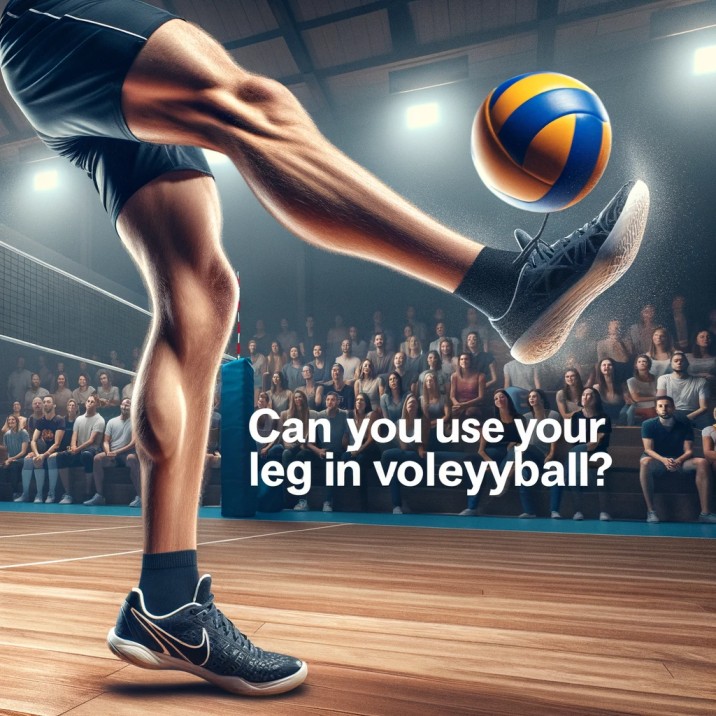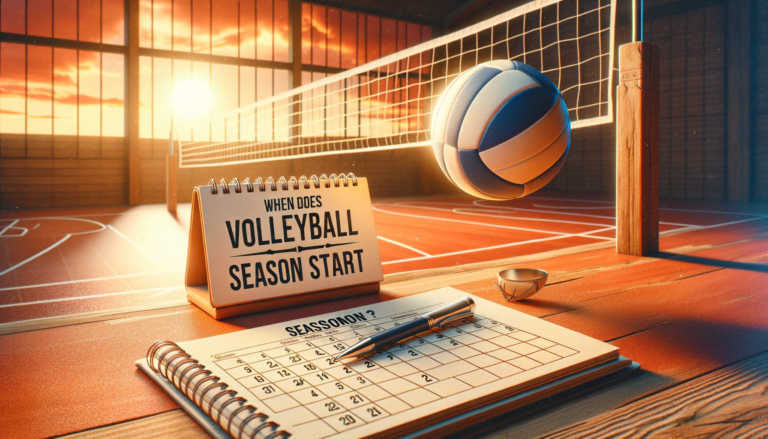How to Dive in Volleyball: Mastering the Dive in Volleyball
Introduction
In this article, complete information about Mastering the Dive in volleyball is given. There’s an unmatched adrenaline rush when you see a volleyball player lunge forward, stretching every muscle, just to prevent that ball from touching the ground.
This action, known as diving, isn’t just for the show. It’s a crucial skill that can make or break a game. In this guide, we’ll delve deep into the art of diving in volleyball, from its significance to mastering the basics. So, whether you’re a newbie or looking to refine your diving skills, this guide is for you.
Why Diving is Essential in Volleyball
- Enhancing Team Defense: A team that has players proficient in diving can defend against powerful spikes and tricky shots. It’s like having a safety net; even if the ball goes past the blockers, there’s still a chance to save it.
- Increasing the Chances of Winning Rallies: Every point in volleyball matters. By diving and saving balls that would otherwise be lost, you increase your team’s chances of winning that crucial rally.
- Boosting Player Confidence: Knowing that you can dive and save a ball boosts not just your confidence but also the morale of the entire team. It sends a message: “We won’t let any ball drop without a fight!”
How to Dive in Volleyball?
The Basics of Diving
Diving isn’t just about throwing yourself at the ball. It’s a calculated move, and mastering the basics can make a significant difference.
- Proper Stance and Positioning: Before you even think of diving, your stance matters. Stay low, with your weight on the balls of your feet, ready to move in any direction.
- The Importance of Anticipation: Volleyball is a fast-paced game. Anticipating where the ball will land gives you a head start. Always keep an eye on the ball and the opposing player’s body language.
- The Role of Hand Positioning: When diving, your hands should be outstretched, forming a platform for the ball. This not only helps in directing the ball but also in cushioning your fall.

Advanced Diving Techniques
Diving in volleyball isn’t just about the basics. As you progress, you’ll encounter advanced techniques that can further enhance your defensive skills. Here are some of the top techniques to master:
- Rolling After a Dive: Once you’ve made contact with the ball, it’s essential to roll. This action disperses the impact, reducing the risk of injury. Think of it as a smooth transition from a dive to getting back on your feet.
- Using the “Pancake” Technique: This technique involves laying your hand flat on the ground, palm down, so the ball bounces off the back of your hand. It’s a last-resort move when you can’t get under the ball in time.
- Diving Forward vs. Diving Sideways: While a forward dive gives you more reach, a sideways dive can be quicker and allows for a smoother roll. The choice depends on the ball’s trajectory and your positioning.
Safety Precautions While Diving
Safety should always be a priority. Here are some precautions to keep in mind:
- Wearing Appropriate Gear: Ensure you have knee pads and elbow pads. These provide cushioning and protect against scrapes and bruises.
- Proper Landing: Always aim to land on the meaty parts of your body, like your thighs and shoulders. Avoid landing on joints like wrists or elbows to prevent injuries.
- The Importance of Regular Practice: Like any skill, the more you practice diving, the better and safer you’ll become. Regular practice helps in muscle memory and reduces the chances of making a wrong move.
9 Steps to the Perfect Volleyball Dive
Step 1: The Worm
Start by lying flat on the ground and practice pushing off with your legs to slide forward. This helps you get a feel for the motion without the impact.
Step 2: Supermans
Should I use a mat to practice diving?
Yes, especially when starting out. A mat can provide a softer landing.
The Superman:
Lie flat on your stomach with arms stretched out in front. Push off with your legs and slide forward, mimicking the motion of a dive.
Step 3: One Step Superman
From a standing position, take one step forward and then dive, sliding on your stomach.
Step 4: One arm Superman
This time, keep one arm by your side and stretch the other out in front as you dive.
Step 5: One arm, One Step Superman
Combine the previous two steps. Take one step, then dive with one arm stretched out.
Step 6: Superman’s with the volleyball
Hold a volleyball in the hand of the stretched-out arm and practice the Superman dive.
Step 7: One Step Superman with volleyball
Take one step and then dive, holding the volleyball in the stretched-out arm.
Step 8: 10 Free Dives
Without the ball, practice diving freely, ensuring you’re using proper technique.
Step 9: The Running Swan Dive
Start with a short run, then dive forward, stretching both arms out in front.
How to not be afraid to dive in volleyball
- Practice: The more you practice diving, the more comfortable you’ll become.
- Use Mats: Start with mats to reduce the fear of injury.
- Visualization: Visualize yourself diving successfully.
- Start Small: Begin with smaller dives and gradually increase the intensity.
How to Practice Diving By Yourself
- Use a Mat: This provides a softer landing and reduces the risk of injury.
- Wall Toss: Toss a ball against a wall and practice diving to retrieve it.
- Visualization: Even without a ball, practicing the motion can be beneficial.
- Record Yourself: This allows you to review and correct your technique.
- Stay Consistent: Like any skill, regular practice is key to improvement.
FAQs
How do I practice diving without hurting myself?
Start with soft surfaces like grass or sand. Use mats if practicing indoors. Always warm up before practicing and wear protective gear.
What’s the difference between a dive and a roll in volleyball?
A dive is the act of lunging for the ball, while a roll is what you do after the dive to get back on your feet and minimize injury.
How can I improve my diving speed and accuracy?
Regular practice, agility drills, and strength training can help. Also, watching and analyzing professional players can provide insights into perfecting your dive.
How can I practice diving at home for volleyball?
Use a soft surface like a carpet or yoga mat.
Clear the area of any obstacles.
Start by practicing the diving motion without actually diving, focusing on form.
Use pillows or cushions to practice safe landings.
· How do you dolphin dive in volleyball?
- The term “dolphin dive” isn’t standard in volleyball. However, in some contexts, it might refer to a fluid diving motion where a player dives and smoothly transitions into a roll, similar to how a dolphin gracefully dives in and out of water.
· Why do you dive in volleyball?
To save balls that are out of arm’s reach.
To defend against powerful spikes or shots.
To keep the ball in play and prevent the opposing team from scoring.
· How do you dive with your chest in volleyball?
Start with a low stance.
Lunge forward, leading with your chest and arms outstretched.
Keep your chin tucked to avoid hitting your head.
Slide on your chest and forearms, using them to cushion and control your landing.
· How do you properly dive?
Maintain a low center of gravity.
Lead with your arms outstretched.
Use your legs to propel you forward.
Tuck your chin and avoid landing on joints like wrists or elbows.
· How do I prepare myself for diving?
Warm up with stretching and agility exercises.
Wear appropriate gear, like knee pads.
Practice on soft surfaces initially.
Focus on technique over distance.
· What is a volleyball dive called?
- It’s commonly referred to as a “dive” or “dig” (though a dig doesn’t always involve a dive).
· How do you coach diving in volleyball?
Start with the basics of stance and positioning.
Use drills to practice diving technique.
Emphasize safety and proper landing.
Provide feedback and correct form as needed.
· Why is diving a hard sport?
Requires physical agility, strength, and coordination.
Mental challenges, including overcoming fear and staying focused.
Risk of injury if not done correctly.
· What are the 5 steps of diving?
- Approach: The initial steps leading to the dive.
- Takeoff: The jump or push off the ground or board.
- Flight: The time spent in the air.
- Entry: The moment of contact with the water.
- Underwater: Actions performed after entering the water.
· What is the number 1 rule of diving?
- In scuba diving, the number one rule is to never hold your breath. In sports like volleyball, the primary rule for diving would be safety first.
· What is the safest way to dive?
- Always dive in areas you’re familiar with or that are marked safe for diving.
- Check the depth and ensure there are no obstacles.
- Use proper technique to avoid injury.
- Never dive head-first unless trained and in a safe environment.
· What is a Volleyball Dive?
- In volleyball, a dive is a defensive move where a player throws themselves to the ground to keep the ball from hitting the floor. It’s a crucial skill for players, especially liberos, to master in order to save balls that are out of reach with a standard pass.
· What’s the difference between a volleyball dive and roll?
-
- A volleyball dive is when a player stretches out to hit the ball and lands mostly on their chest or stomach.
- A roll is a follow-through after the dive where the player tucks their shoulder and rolls, allowing them to quickly get back on their feet.
-
What is the proper way to dive in volleyball?
- The key to a successful dive is to ensure that you’re not injuring yourself while reaching for the ball. Players should aim to land on the meaty parts of their body, like the thighs and chest, rather than on bones or joints.
Conclusion
Mastering the dive in volleyball is more than just a flashy move. It’s a testament to a player’s dedication, agility, and commitment to their team. While the dive can be challenging and even intimidating at first, with the right techniques and safety precautions, it becomes an invaluable tool in a player’s arsenal. So, gear up, practice regularly, and remember: that every dive you make brings your team one step closer to victory.





